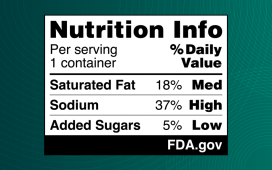Burden of deaths up; most patients receiving opioid analgesics use immediate-release formulations
FRIDAY, June 1, 2018 (HealthDay News) — From 2001 to 2016 there was an increase in the number and percentage of opioid-related deaths; in addition, most patients receiving opioids receive immediate-release (IR) formulations, according to two studies published online June 1 in JAMA Network Open.
Tara Gomes, Ph.D., from St. Michael’s Hospital in Toronto, and colleagues examined the burden of opioid-related mortality over time across the United States. The researchers observed a 345 percent increase in the number of opioid-related deaths in the United States between 2001 and 2016, from 33.3 to 130.7 deaths per million population. Men accounted for 67.5 percent of all opioid-related deaths by 2016. From 2001 to 2016 there was a 292 percent increase in the percentage of deaths attributable to opioids, from 0.4 to 1.5 percent of deaths. The burden was highest among 24- to 35-year-olds; 20 percent of deaths in this age group were due to opioids in 2016.
Catherine S. Hwang, M.S.P.H., from the University of Washington School of Medicine in Seattle, and colleagues conducted a retrospective study of 169 million individuals receiving opioid analgesics from across 90 percent of outpatient pharmacies in the United States from Jan. 1, 2003, to Dec. 31, 2014. The researchers found that 168,315,458 patients filled IR formulations and 10,216,570 filled extended-release/long-acting (ER/LA) formulations. A small and decreasing proportion of patients with long-term IR opioid analgesic therapy added (3.8 to 1.8 percent) or switched (1.0 to 0.5 percent) to an ER/LA formulation from 2003 to 2014.
“Most patients receiving opioid analgesics, whether for short or extended periods, use IR formulations,” Hwang and colleagues write.
Authors from both studies and the editorial disclosed financial ties to pharmaceutical and biopharmaceutical companies.
Abstract/Full Text – Gomes
Abstract/Full Text – Hwang
Copyright © 2018 HealthDay. All rights reserved.








